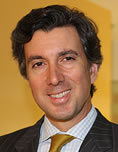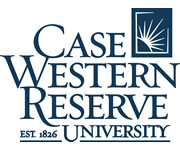Patenting Genes

Craig Nard, J.D. - Tom J. E. and Bette Lou Walker Professor of Law and the Director of the Center for Law, Technology, and the Arts at Case Western Reserve University School of Law |
Friday October 18, 2013
12:30-1:30 p.m.
Dampeer Room
Kelvin Smith Library
Case Western Reserve University
Dear Colleagues:
On June 13th the Supreme Court, in a unanimous decision written by Justice Thomas, ruled that naturally-occurring human genes cannot be patented. The U.S. Constitution explicitly grants Congress the power to "promote the Progress of Science and useful Arts by securing for limited Times to Authors and Inventors the exclusive Right to their respective Writings and Discoveries." This does not create a right, but does allow a policy.
By some estimates twenty percent of human genes had been patented since the human genome was almost completely mapped in 2000. The U.S. Patent and Trademark Office had allowed patenting on the grounds that isolated sequences of genes do not occur naturally. Arguably, isolating the precise location of genes and their function is a "discovery." In the case at issue the company, Myriad Genetics, had used its patent to block research that could create competition for its test for the BRCA1 and BRCA2 genes that are related to breast cancer. So the patent allowed it to charge $3000 for its test.
What are the implications of this ruling for the biotech industry? Is the prospect of high profits really necessary to encourage research? Is it worth the possible restrictions on access to the fruits of the research? Professor Nard, author of a major casebook on patent law, will share his views and lead discussion.
All best regards,
Joe White
Luxenberg Family Professor of Public Policy and Director, Center for Policy Studies
About Our Guest
Craig A. Nard is the Tom J.E. and Bette Lou Walker Professor of Law and the founding director of the Center for Law, Technology and the Arts. He is also a Senior Lecturer at the World Intellectual Property Organization Academy at the University of Torino, Italy, and Principal Advisor to the Center for Studies and Research in Intellectual Property in Calcutta, India. Craig practiced intellectual property law in Dallas, Texas prior to becoming the Julius Silver Fellow in Law, Science, and Technology at Columbia University School of Law. After his fellowship, he clerked on the United States Court of Appeals for the Federal Circuit in Washington, D.C. for the Honorable Helen W. Nies, and then the Honorable Giles S. Rich. Craig has published in various law reviews, including the Northwestern Law Review, Georgetown Law Journal, Minnesota Law Review, Illinois Law Review, Indiana Law Journal, Harvard Journal of Law & Technology, Review of Law & Economics, William & Mary Law Review, and the Wake Forest Law Review. He is also the author of the patent law casebook, The Law of Patents (Aspen Publishers 2008), Fundamentals of United States Intellectual Property Law, (Kluwer Law International 2006) (with Halpern and Port) and The Law of Intellectual Property (Aspen Publishing) (2005) (with Madison and Barnes). Craig served as member of the Northern District of California Advisory Committee on Model Patent Jury Instructions appointed by the Honorable Ronald M. Whyte of the Northern District of California. He is licensed to practice before the Patent and Trademark Office and is a member of the Texas bar.
Where We Meet
The Friday Public Affairs Lunch convenes each Friday when classes are in session, from 12:30 p.m. to 1:30 p.m. We usually meet in the Dampeer Room of Kelvin Smith Library. The Dampeer Room is on the second floor of the library. If you get off the elevators, turn right, pass the first bank of tables, and turn right again. Occasionally we need to use a different room; that will always be announced in the weekly e-mails.
Parking Possibilities
The most convenient parking is the lot underneath Severance Hall. We regret that it is not free. From that lot there is an elevator up to street level (labeled as for the Thwing Center); it is less than 50 yards from that exit to the library entrance.
You can get from the Severance garage to the library without going outside. Near the entry gates - just to the right if you were driving out - there is a door into a corridor. Walk down the corridor and there will be another door. Beyond that door you'll find the entrance to an elevator which goes up to an entrance right inside the doors to Kelvin Smith Library.
Friday Lunch Upcoming Topics and Speakers:
October 25: Why Performance Enhancing Drugs Should be Legal in Sports. With Max Mehlman, Arthur E. Petersilge Professor of Law and Director of the Law-Medicine Center.
November 1: Press Freedom and the Edward Snowden Affair. With Jim Sheeler, Shirley Wormser Professor of Journalism and Media Writing.
November 8: Is It or Is It Not Cancer? Is That the Question? With Nathan A. Berger, Distinguished University Professor and Director, Center for Science, Health and Society.
November 15: The Opportunity Corridor and Beyond: Transportation Issues in University Circle. With Debbie Berry, Vice President of Development, University Circle Inc.
November 22: Economic Effects of Health Care Reform: The Massachusetts Experience. With Mark Votruba, Associate Professor of Economics.
November 29 : No Session - Thanksgiving Break
December 6: TBA |
|
October 14, 2013
If you would like to reply, submit items for inclusion, or not receive this weekly e-mail please send a notice to: padg@case.edu
Upcoming Events
Targets, Markets , and the English National Health Service
ADAM J. OLIVER Ph.D., Reader in Health and Social Policy, London School of Economics and Political Science, Friday, October 25, 2013 at 4:15 p.m., Peter B. Lewis Building - Room 202, 11119 Bellflower Road, Cleveland, OH 44106. A Global Currents Lecture and Discussion co-sponsored by the CWRU Department of Economics and the Center for Policy Studies with the generous support of Ms. Eloise Briskin. This forum is free and open to the public.
Discussions of "health care reform" in the United States often cite other countries, especially the United Kingdom, as either examples of what to do or scare stories about why change is dangerous.
Yet those systems are not static, and in the past 25 years, few countries have seen as many rounds of reform as the United Kingdom. They range from the National Institute for Clinical Excellence (NICE), beloved and totally misunderstood by U.S. reformers, through management by "targets and terror," to the latest round of "competitive" reform enacted in 2012. It has been driven by public dissatisfaction, management fads, government biases and broader trends like devolution – which is why we now distinguish the English NHS from those of Scotland, Wales, and Northern Ireland. There has been lots of controversy and hype, but what has actually happened?
Adam Oliver is one of the world's leaders in comparing health care systems, both in his own research and as co-editor of Health Economics, Policy and Law and an organizer of international forums such as the Anglo-American Health Policy Network and the European Health Policy Group. He is modest enough not to claim he can explain it all – but if anyone can give an informed and balanced view, he can.
The Supreme Court’s Treatment of Same-Sex Marriage in United States v. Windsor and Hollingsworth v. Perry: Analysis and Implications
Notable scholars in the fields of political science, sociology, religious liberty, tax and constitutional law, will examine the Court’s decisions through the lenses of their disciplines. They will discuss the decisions in these cases, the legal questions which are left unanswered, and their implications on the future of marriage. Friday, October 25, 2013, 8:45 A.M. - 4:00 P.M., Moot Courtroom (A59), CWRU School of Law, 11075 East Boulevard, Cleveland, OH 44106-7148. Sponsored by the Law Review Symposium.
This symposium will address the variety of legal issues associated with the Supreme Court’s decisions in United States v. Windsor and Hollingsworth v. Perry. These cases address the constitutionality of the Defense of Marriage Act and Proposition 8, California's gay marriage ban. In Windsor, the Court struck down Section 3 of the Defense of Marriage Act as unconstitutional under the Equal Protection Clause. However, it did not reach the merits of Perry due to lack of standing.
Panel discussions will focus on judicial independence, the level of scrutiny applied by the Court to these decisions, federalism, and the implication of these rulings on the definition of family in America.
S |
M |
T |
W |
T |
F |
S |
|
|
1 |
2 |
3 |
4 |
5 |
6 |
7 |
8 |
9 |
10 |
11 |
12 |
13 |
14 |
15 |
16 |
17 |
18 |
19 |
20 |
21 |
22 |
23 |
24 |
25 |
26 |
27 |
28 |
29 |
30 |
31 |
|
|
About the Friday Lunch Newsletter
If you would like to reply, submit items for inclusion, or not receive this weekly e-mail please send a notice to: padg@case.edu.
|
|


